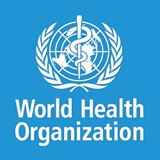
Family planning (FP) is an essential component of health care provided during the antenatal period, immediately after delivery and during the first year postpartum (WHO 2009). Postpartum family planning (PPFP) is defined as the prevention of unintended pregnancy and closely spaced pregnancies through the first 12 months following childbirth.
This Programming strategies for postpartum family planning document was prepared to: 1) support the Statement for collective action for postpartum family planning (Annex 1), and 2) be used by programme planners and managers as a resource when designing interventions to integrate PPFP into national and subnational strategies.
PPFP should not be considered a ‘vertical’ programme, but rather as an integrated part of existing maternal and child health and FP efforts. Successful PPFP interventions require holistic and evidence-based programme strategies that contribute to strengthened health systems and sustained improvements in high-quality services that put people at the centre of health care (Figure 1).
The elements involved in designing a PPFP programme or intervention are the focus of this document. It is not, however, intended to be prescriptive or serve as a definitive ‘how-to’ for programme design and implementation. Users are assumed to have general experience in the design of family planning/reproductive health (FP/RH) programmes; this document provides additional support for PPFP programming. The content offers strategies that can be applied towards either developing a comprehensive programme that addresses a woman’s FP needs through the entire postpartum period, or strengthening the delivery of FP services to women who are postpartum at one or more points of contact within the health system. Clinical guidance on FP service delivery is available within WHO’s two evidence-based guidelines: the Medical eligibility for contraceptive use (MEC) (WHO 2009) and Selected practice recommendations for contraceptive use (SPR) (WHO 2008). Additionally, the World Health Organization (WHO) publishes a handbook which providers of family planning services can reference, titled Family planning: a global handbook for providers (WHO 2011).